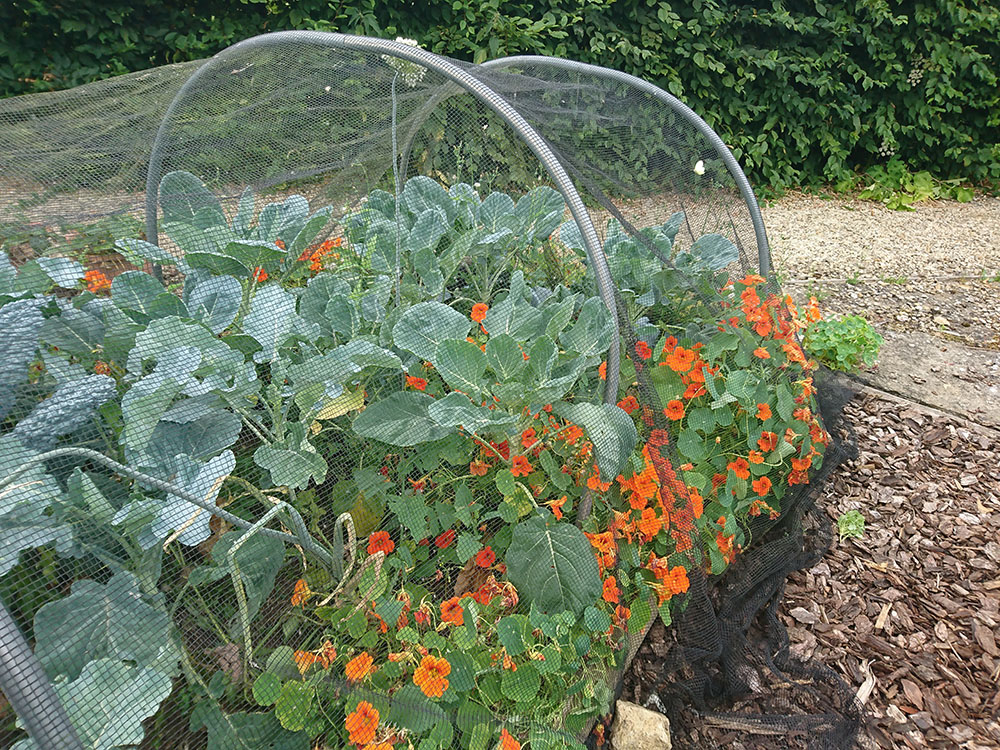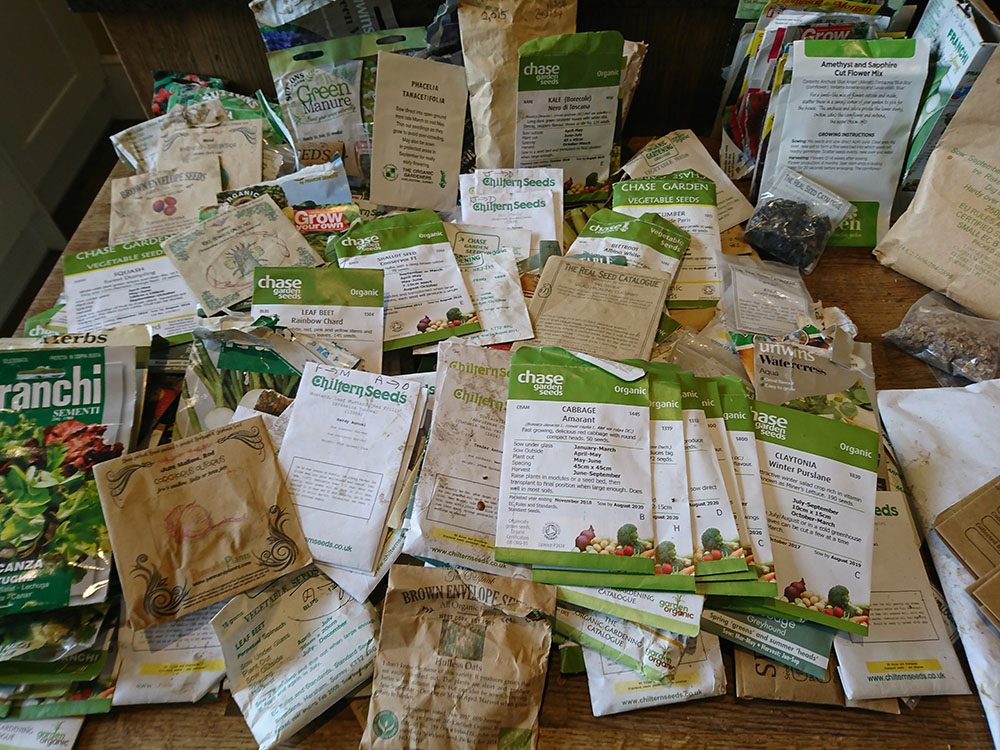It’s time to sit down and look through all the seed catalogues and try not to get carried away. I like to review the successes and failures of the year when choosing varieties to grow for the new year and I check my stocks as you can see in the photo, as I have a habit of ordering seeds that I don’t need!
2018 was a challenging year and an indicator of the climate changing times ahead. First it rained a lot, then the Beast from the East dumped a load of snow. The ground was cold and wet and spring was late. However, May was record breaking, being the warmest May since records began with endless sunshine and hardly any rain. The Met Office described spring 2018 as “very dynamic with many fluctuations”. The high temperatures and drought continued through to August and then in true drought style, storms rolled in and dumped a lot of rain. Autumn was warm and many crops continued to grow through to December.
I have been looking at my records to remind myself what was successful and what was not. My leeks have been brilliant, as have the squash on my mound beds. Twelve huge fruits from one Queensland Blue plant was amazing. Elsewhere, the butternut squash Hunter was prolific. Other successes include beets, kohl rabi, parsnip (my own landrace from Tender and True), chard, early pea, chick peas, butter beans, French beans and edamame beans. I struggled to get carrots to germinate so I had hardly any carrots until the last sowing. The brassicas survived well under their butterfly mesh tunnels as I think the mesh created valuable shade and reduced the temperatures a little, but I had loads of white flies and they attracted cluster flies. There were clouds of them under the mesh, which was truly unpleasant. The brassicas may have survived, but they didn’t really start putting on growth until September. The summer cabbage was ready in autumn and the early Brussels are only just reaching a harvestable size and I have a few tiny cauliflower florets.


All the beds were mulched to retain water, but I did have to water the spinach, beets and chard and some of the squash. My mound (Hugelcultur) bed was not watered, other than to establish transplants, but the high level of organic matter and the woody material at the base of the bed meant water was retained.
So what do I order? I am paying a lot of attention to the descriptions, looking for slow to bolt and drought tolerant in particular. Being in Somerset, I may opt for varieties that come from France and Italy as they may be able to cope better with high temperatures and low rainfall. There is a risk of late frost but that is becoming increasingly less likely.
I may take a different tack with brassicas and look for the compact varieties that can be grown closer together and shade the soil effectively. Early maturing may be a bonus, as the crop can be harvested before the high temperatures take their toll. So something like broccoli Cima di Rapa, Brussels Early Half Tall, Calabrese Kabuki and Kale Nero de Toscana rather than Black Magic
Salads grew well last year, both in the tunnel and outside so there will be more orders of agretti (tricky to germinate and get going but once underway is prolific), perilla, purslane, wild rocket, mustard Red Frills (still going strong in the raised beds), plus plenty of oak leaf lettuce and salad leaves.
But the stars of the show in 2018 were chickpeas and edamame beans so I’ll be growing far more in 2019.

